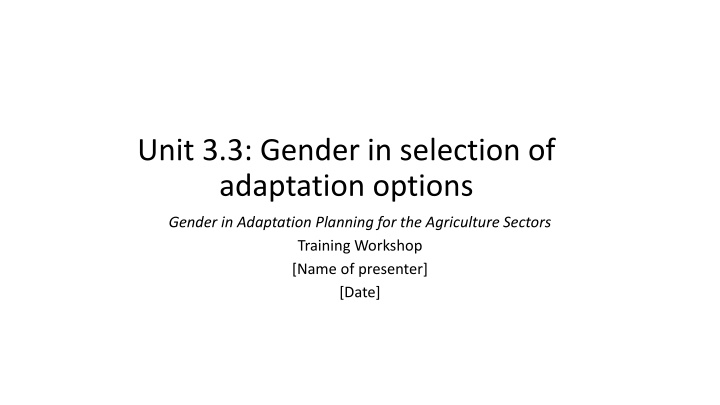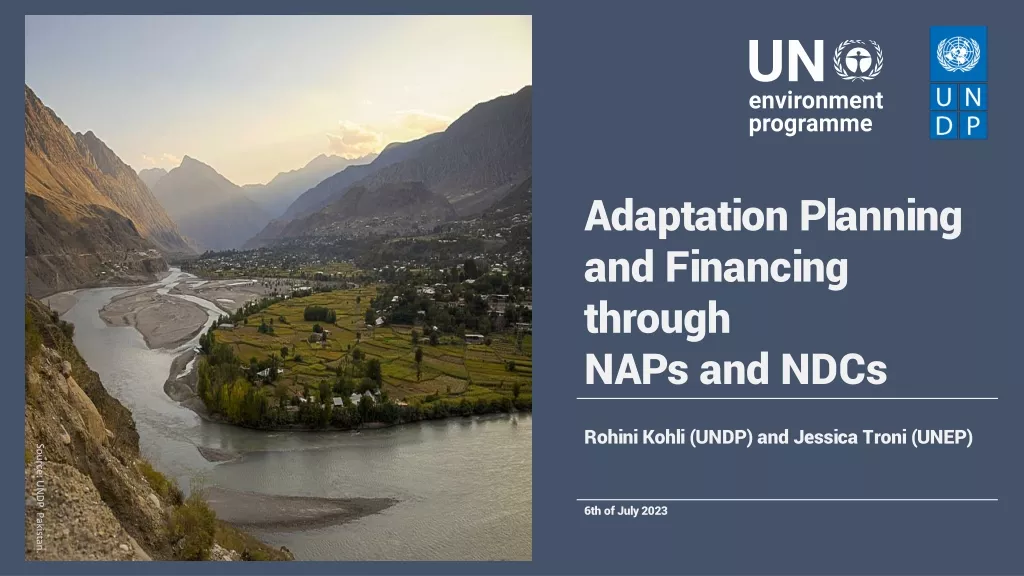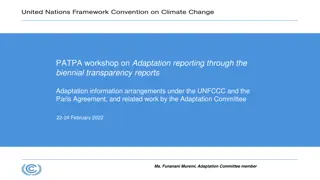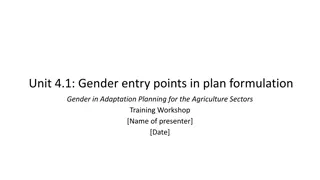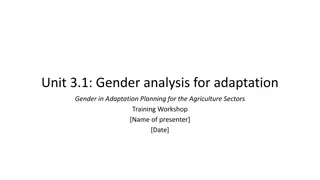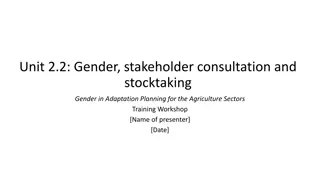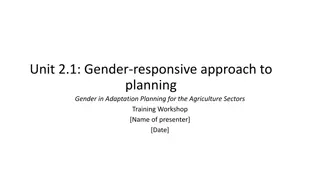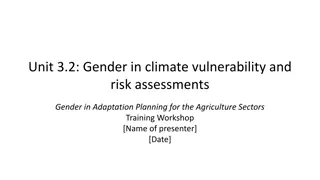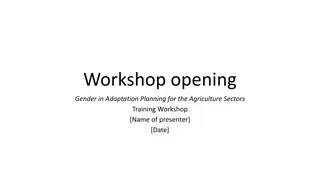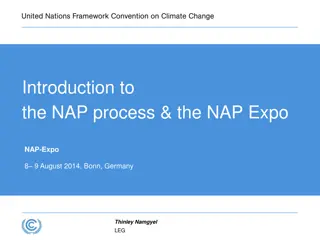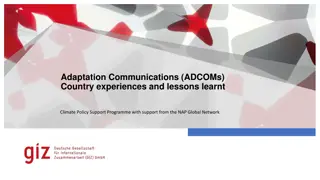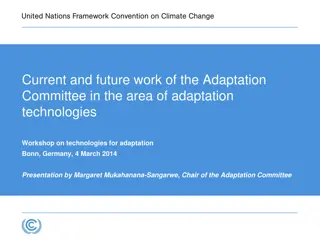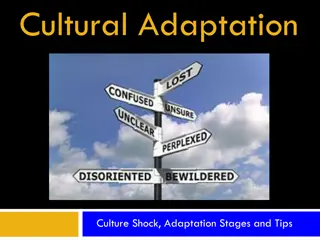Gender Considerations in Agriculture Sector Adaptation Planning
Gender integration in identifying, appraising, and prioritizing adaptation options for agriculture sectors. Understand the importance of gender-responsive adaptation planning and its impact on resilience and equality.
Download Presentation

Please find below an Image/Link to download the presentation.
The content on the website is provided AS IS for your information and personal use only. It may not be sold, licensed, or shared on other websites without obtaining consent from the author.If you encounter any issues during the download, it is possible that the publisher has removed the file from their server.
You are allowed to download the files provided on this website for personal or commercial use, subject to the condition that they are used lawfully. All files are the property of their respective owners.
The content on the website is provided AS IS for your information and personal use only. It may not be sold, licensed, or shared on other websites without obtaining consent from the author.
E N D
Presentation Transcript
Unit 3.3: Gender in selection of adaptation options Gender in Adaptation Planning for the Agriculture Sectors Training Workshop [Name of presenter] [Date]
Learning outcomes Discuss why it is important to integrate gender considerations in the identification and appraisal of adaptation options for the agriculture sectors. Discuss Point to some of the strengths and weaknesses of commonly applied decision support tools from a gender perspective. Point to Summarize examples of gender-responsive adaptation priorities for adaptation planning. Summarize
Definitions Question: Can you provide a definition for the following? Identification of adaptation options Appraisal and prioritization of adaptation options
Why consider gender in identification, appraisal, prioritization of adaptation options? Climate impacts are not gender-neutral. Country commitments to global gender and climate commitments. Structural factors (e.g. social norms, policies) affect women s/men s ability to adopt options. To make adaptation options relevant to women, men depending on agriculture for food security, livelihoods.
Selecting adaptation options What are the costs and benefits of each adaptation option? How best can the adaptation options be implemented, and what are the conditions for success? Is it possible to identify co-benefits between the adaptation options and development?
What are gender-responsive adaptation options for the ag sectors? Respond to potentially different needs, challenges of women and men whose food security, livelihoods, well-being depend on agriculture as producers, fishers, vendors, tradespeople, input agents, etc. Gender-responsive adaptation options: do not exacerbate gender inequality (or create new inequality) build women s and men s capacity for resilience equally ensure equal participation of range of women and men in decision-making, implementation (e.g. indigenous peoples, youth, people living with disabilities, etc.).
Gender considerations of criteria for appraisal & prioritization Timing Cost Co-benefits Effectiveness and efficiency Urgency for different groups Seasonal issues for men s/women s responsibilities Access to financial resources of women and men Consequences on productivity or goods produced by women, men Increase resilience for all groups Flexibility or robustness Contribution to poverty reduction Social, political acceptance Economic, social, technological, environmental feasibility Respond to different needs, challenges of women and men Inclusion of women and men and address tensions in selection of options Reduce poverty of all members of a household Gender roles and responsibilities shape feasibility for different groups
Decision support tools Each adaptation planning process will have a process for ranking and prioritizing adaptation options Using more than one decision support tool helps to ensure both quantitative and qualitative data and information can be considered. Examples: Cost-benefit analysis (CBA) Cost-effectiveness analysis (CEA) Multi-criteria analysis (MCA) Barrier analysis
Summary Are adaptation options and priority setting based on: Disaggregated data that genuinely reflects gender-differentiated needs, interests, felt impacts, challenges? Qualitative and quantitative data? Are decision-making processes accessible and to whom? Are organizations representing women, youth, etc. consulted during appraisal/priority setting, e.g. Ministry of Women s Affairs/Gender, NGOs, research organizations? Are decision-making processes equitable (voice, respect, diversity)? Are gender-responsive measures included?
